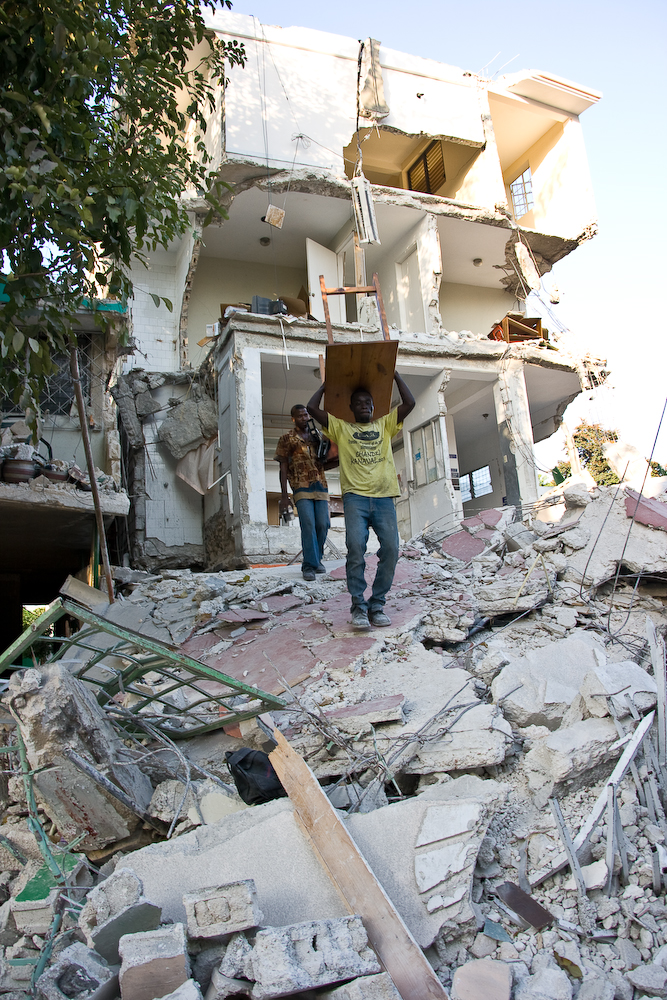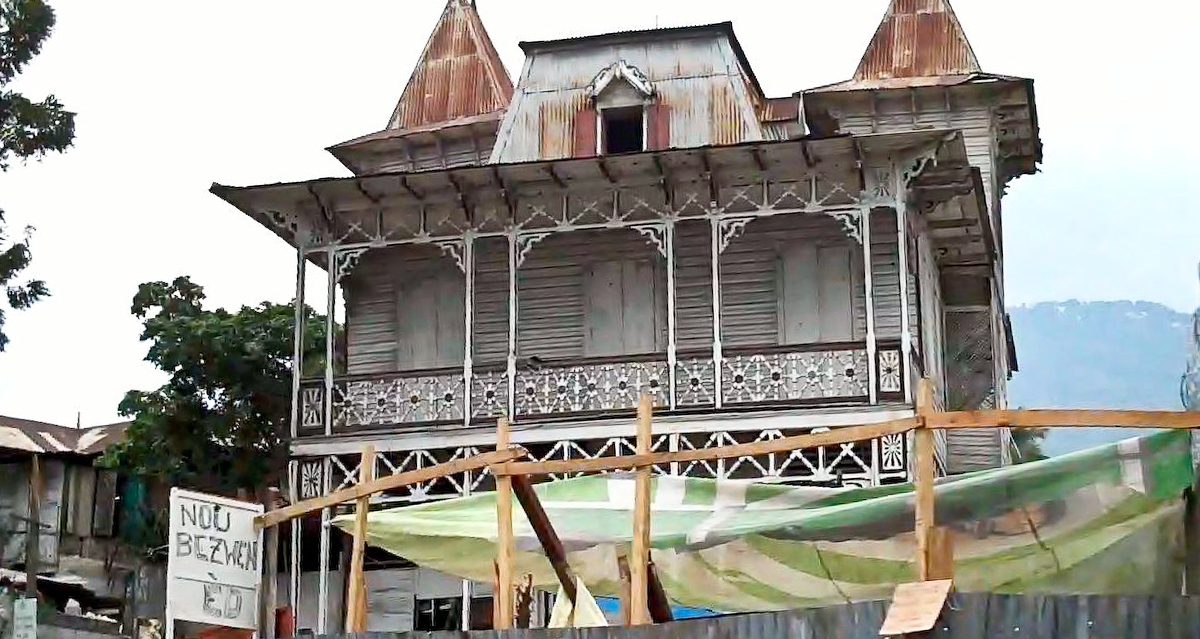Global Voices has sent a two-person team to Port-au-Prince in the wake of the Haiti earthquake, to help support citizen media activity. Georgia Popplewell and Alice Backer are also contributing firsthand reporting to our coverage of recovery efforts. Find out more about their assignment here.
PORT-AU-PRINCE, HAITI, January 30, 2010
Having spent the last year doing a house renovation, and one that’s involved a fair amount of demolition, I’m naturally intrigued by the conversations around the rebuilding of Haiti post-earthquake. We heard yesterday that they’ve begun to tear down the damaged buildings in Port-au-Prince, even though an official demolition plan is yet to be announced. We’ve seen a fair amount of salvaging, do-it-yourself rubble-removal, and a backhoe or two on our trips around town: those who can and those who can afford to, such as private enterprises like Sogebank, are forging ahead with the cleanup process.
Jacqueline Charles writes in the Miami Herald that “government estimates that 25,000 government offices and businesses either toppled or need to be demolished. In addition, there are 225,000 residences that are no longer habitable. In all, some 2.1 billion cubic feet of concrete and rubble need to be hauled out of the city.” The article says that the United Nations Development Programme has hired 12,000 people to clean up debris and hope to have 50,000 clearing roads by next week. I'm assuming this information has come via the daily briefings the UN has been holding for journalists at their headquarters. A development agency contact who's been attending the briefings tells me he's yet to see a Haitian journalist there. He also says he rarely sees non-Haitians at the briefings hosted by the Haitian government.
There's been much discussion about the role played by building standards, or lack thereof, in intensifying the impact of the disaster. Marc Herman, writing a few days ago, reminds us that cultural practices are also part of the mix. “But Adolphe Saint-Louis, a 49-year-old quake survivor interviewed in Port au Prince by New American Media, describes something more complicated than iffy concrete,” Marc writes:
Her home was built as a series of additions, — and with rebar, she says — to keep extended family under one roof, and share building costs in the family. Making the building expandable served an important function, but proved catastrophic when the structure failed.
But even houses that don't appear to be designed with expansion in mind appear to favour concrete as a roofing material. Travelling around Port-au-Prince, I've seen gables and hip roofs made of concrete.
Then there's the critical matter of shelter for those who have lost their homes. Those who can manage it are already beginning to repair and rebuild for themselves. Those who can't have been evacuated to the country side or are living in increasingly fetid improvised tent cities — or rather “sheet cities”, as I heard someone remark, as genuine tents are few and far between.
There's talk of setting up official settlements with proper facilities, which one hopes won't replicate the old mistakes. In the meantime, the crowds camped out in Place St. Pierre in Pétionville — likely one of the better serviced settlements — make do with a handful of portable toilets, and the daily information bulletins ask people to refrain from defecating in the streets. You keep your fingers crossed that this will all be sorted out in time for the rainy season, which begins in three months’ time.
As the bulldozers work to clear the rubble, some Haitians who are very involved in Preservation of Haiti's rich cultural heritage are sounding the alarm about the need to PRESERVE and RESTORE Jacmel's unique architecture - including 100 year old houses. Ironically in P au P, Haiti's famed gingerbread houses are among the only ones standing (like my late grandmere's house in Bois Verna, an otherwise very hard-hit section with nearby Sacre Coeur church collapses. We need to learn from the survival of these well-built wooden houses...
Originally posted at Caribbean Free Radio.
Global Voices’ work in Haiti is supported by our general support donors and by a humanitarian information grant from Internews. Please visit the Global Voices Haiti Earthquake page for more coverage.








